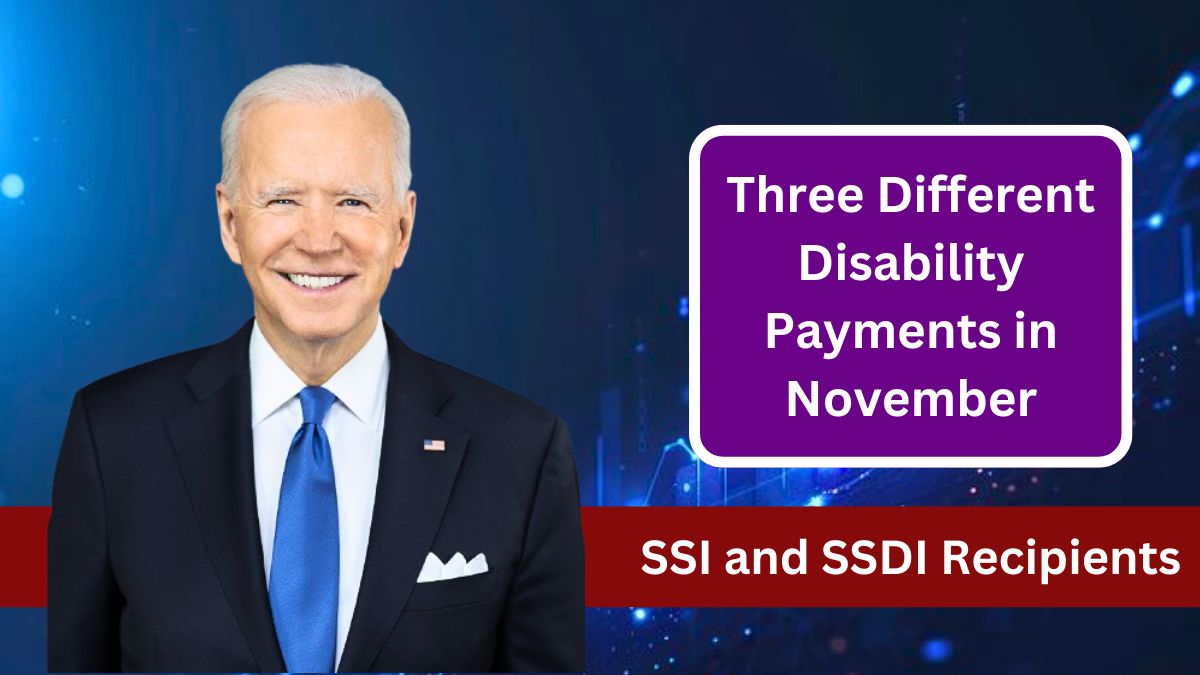The Social Security Administration (SSA) has released the payment schedule for Supplemental Security Income (SSI) and Social Security Disability Insurance (SSDI) for November. While these programs serve different purposes, some recipients may be eligible for both. Knowing the timing and eligibility requirements for these payments can help beneficiaries better manage their finances.
Key Differences
SSI and SSDI are both federal programs managed by the SSA, but they serve different groups.
- SSDI is for individuals with a qualifying disability who have worked and paid Social Security taxes.
- SSI is designed to help low-income seniors, blind individuals, and people with disabilities, regardless of their work history.
November Payment Schedule
November will be an interesting month for recipients because of how the payment schedule is set up. The SSA has outlined specific dates for both SSI and SSDI payments, with some recipients getting more than one check. Here’s a breakdown of the payment schedule:
| Payment Date | Payment Type | Eligibility |
|---|---|---|
| November 1 | SSI | Eligible seniors, blind, or disabled individuals |
| November 1 | SSDI | Disability Insurance benefits before May 1997 or those receiving SSI and SSDI |
| November 13, 20, 27 | SSDI | Disability Insurance recipients (1 payment per month) |
| November 29 | SSI (for December) | Eligible seniors, blind, or disabled individuals |
Schedule
- SSI on November 1: This payment is for eligible seniors, blind individuals, or those with a disability.
- SSDI on November 1: If you have been receiving SSDI benefits since before May 1997 or receive both SSI and SSDI, you will also get an SSDI payment on this day.
- SSDI on November 13, 20, or 27: If you are receiving SSDI only, you will get one check on one of these dates, but not on the other days.
- SSI on November 29: This is an advance SSI payment for December.
Payments in November
- SSI on November 1: This is the regular monthly SSI check for November.
- SSDI on November 1: For those who qualify for SSDI and have been receiving it before May 1997, or those who receive both SSI and SSDI, they will also get a disability payment on November 1.
- SSI on November 29: This payment is actually for December, but it is sent early.
Therefore, if you are someone who receives both SSI and SSDI, and your SSDI is scheduled for November 1, you will receive three checks in total during November: two SSI payments (one for November, one for December) and one SSDI payment.
Maximum Payment Amounts
The maximum SSI and SSDI payments vary depending on eligibility and income.
- SSI Payments: A single individual can receive up to $943 per month, while eligible married couples can receive up to $1,415.
- SSDI Payments: The average SSDI payment is around $1,539, but this amount can vary based on your work history and earnings. If you are receiving both SSI and SSDI, your SSDI payment may be lower than the average, since SSI is intended to supplement income.
Financial Tips
If you’re receiving both SSI and SSDI but still find it difficult to cover basic needs, such as food, consider applying for SNAP benefits (formerly known as food stamps). These benefits are designed to help low-income individuals and families afford groceries. SSI recipients often qualify for additional government aid, including housing assistance and Medicaid, which can further ease financial strain.
Planning ahead and knowing your payment schedule can help you make the most of your benefits.
FAQs
When will I receive my November SSI payment?
The SSI payment is scheduled for November 1, with an additional early payment on November 29 for December.
Will I get an SSDI check on November 1?
If you started receiving SSDI before May 1997 or also receive SSI, you will get an SSDI check on November 1.
Why am I getting two SSI payments in November?
The November 29 payment is an early payment for December.
How much can I receive from SSI and SSDI?
The maximum SSI for a single person is $943, and the average SSDI payment is $1,539.
What should I do if my SSI and SSDI payments are not enough?
Consider applying for SNAP benefits to help with food costs.











